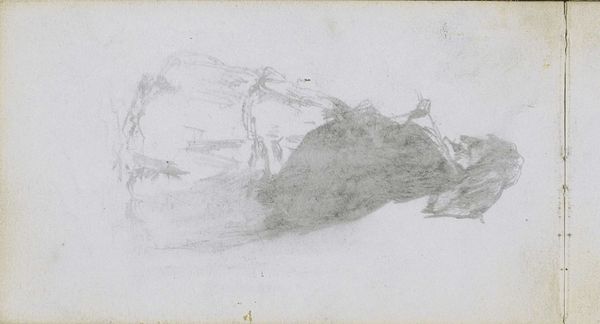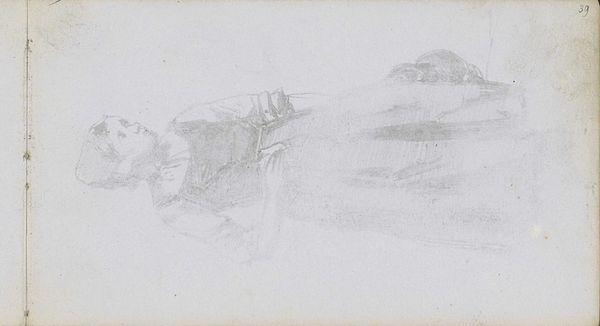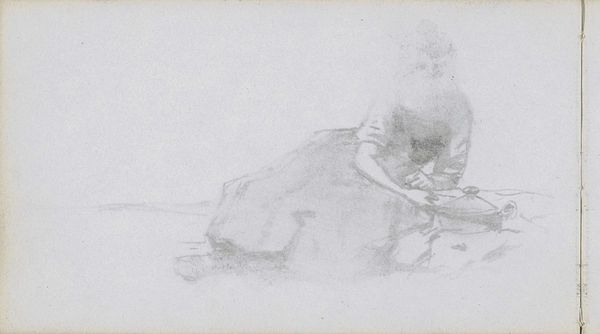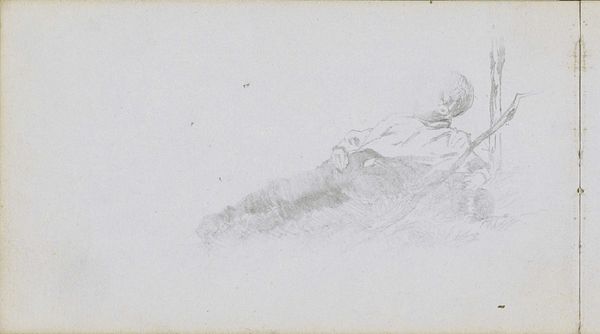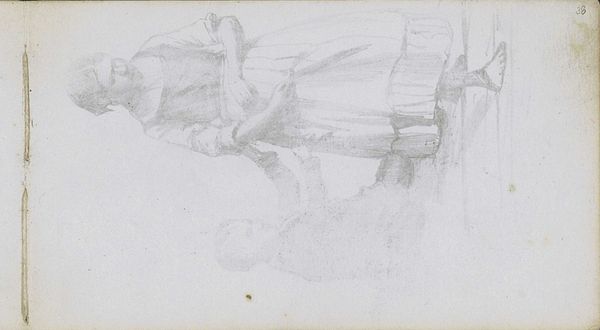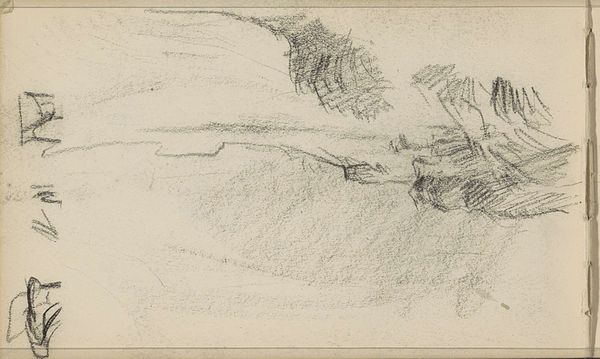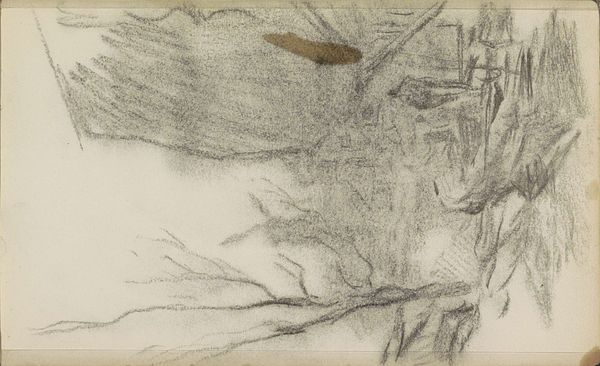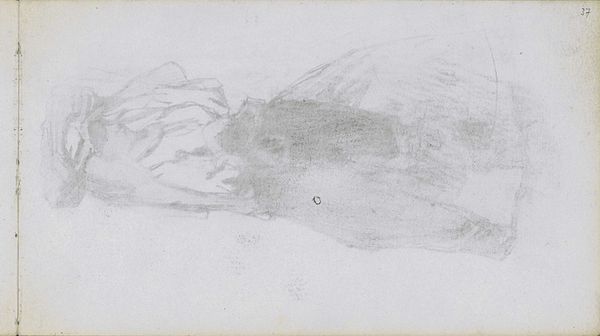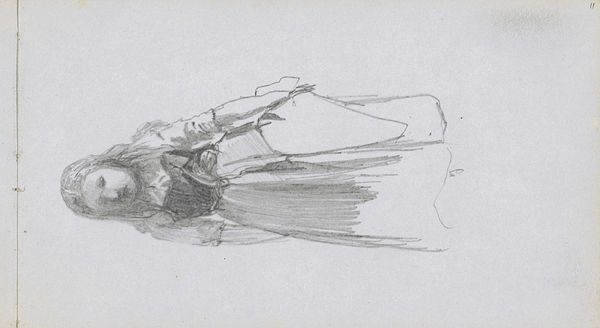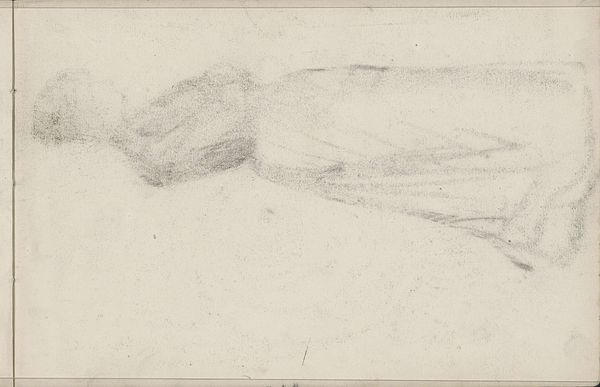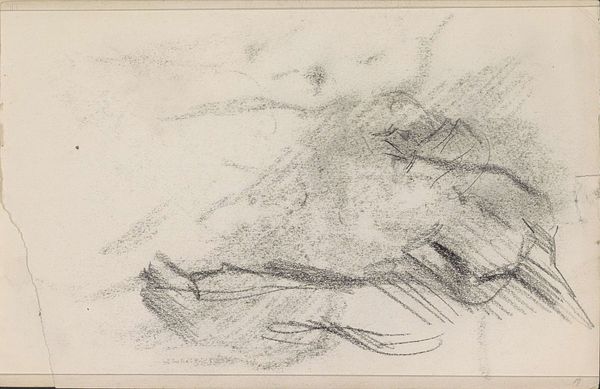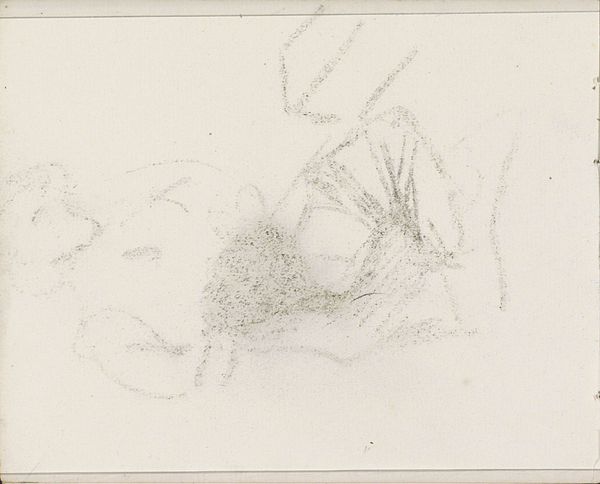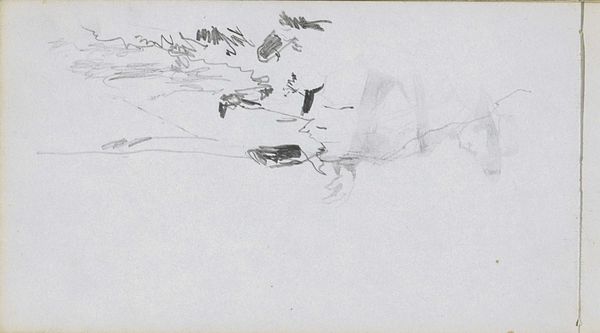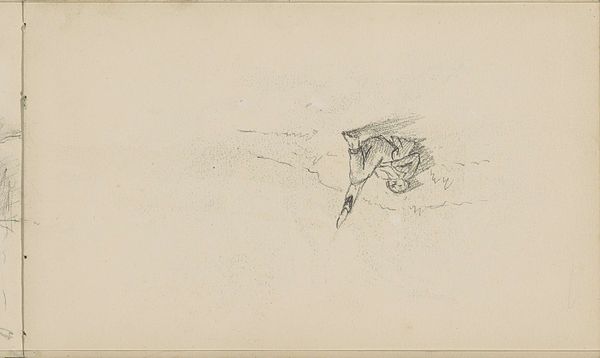
drawing, dry-media, pencil
#
pencil drawn
#
drawing
#
pencil sketch
#
landscape
#
dry-media
#
pencil drawing
#
pencil
#
watercolor
#
realism
Copyright: Rijks Museum: Open Domain
Curator: This work, "Abklatsch van de tekening op pagina 13 recto", made sometime between 1834 and 1903, is a pencil drawing by Johan Hendrik Weissenbruch, currently held at the Rijksmuseum. What are your initial thoughts? Editor: A faint landscape emerges, or rather, is suggested. It’s melancholic, almost ethereal, possessing a haunting ambiguity through the limited tonal range of pencil on paper. It reminds me a bit of a half-remembered dream. Curator: Notice how Weissenbruch employs a masterful interplay of light and shadow using dry media, with the barest minimum of marks. The overall composition favors a horizontal arrangement, directing the eye across the implied land and sky. It's as much about what isn't there as what is. Editor: I agree. It also appears quite vulnerable in its simplicity. As Weissenbruch renders what appears to be a serene countryside, I think about the socioeconomic tensions arising in late 19th century Netherlands—the increasing disparity between the wealthy urban class and those living in rural communities. Was this idyllic vision of pastoral life, presented with muted, almost ghost-like, visual vocabulary a deliberate response? Curator: I appreciate your social read on the work. But from a purely formal standpoint, consider the economy of means—the restraint and precision of the pencil work is exquisite. This suggests that it can stand alone without having to reach so much beyond its aesthetic borders. Editor: True, Weissenbruch displays technical brilliance, but even such 'objective' elements don't exist in a vacuum. A 'simple' landscape can speak to complex lived experiences. Curator: An astute point. But for me, its enduring appeal is the pure, unadulterated focus on the rendering of form through delicate gradations. Editor: And perhaps for others, the real power rests in its potential to act as a visual touchstone to the artist's era. It encourages us to reflect on society as a whole. Curator: I see your perspective, and in the end, I suppose this is how we keep art alive. By looking through both lenses. Editor: Indeed. And enriching our understanding of its context in time.
Comments
No comments
Be the first to comment and join the conversation on the ultimate creative platform.
